#nobuo kawai
Text
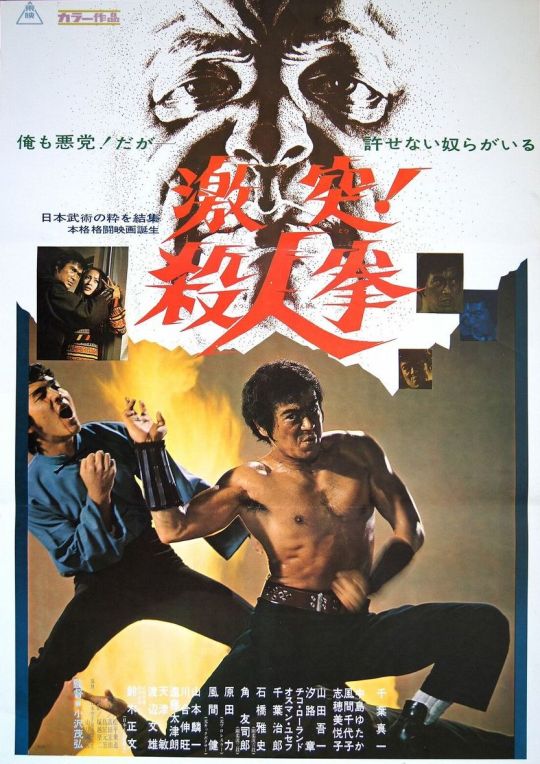





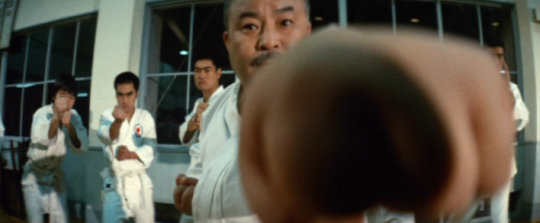
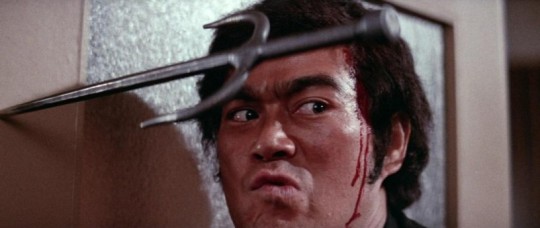
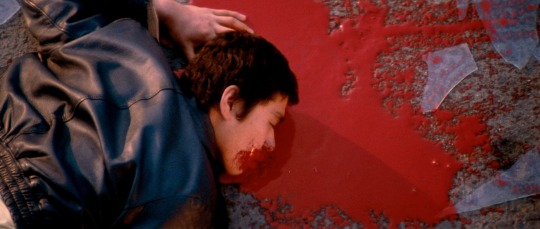

Gekitotsu! Satsujin ken (The Street Fighter, 1974)
"But don't worry, Mutaguchi, there's an evil code of conduct - and I'm very tight-lipped."
#Gekitotsu! Satsujin ken#the street fighter#street fightin' cinema#japanese cinema#sonny chiba#shigehiro ozawa#kôji takada#motohiro torii#shin'ichi chiba#yutaka nakajima#goichi yamada#chiyoko kazama#etsuko shihomi#nobuo kawai#akira shioji#chico lourant#tony cetera#osman yusuf#jirô yabuki#toshiaki tsushima#blood tw#outrageously violent martial arts madness from the master himself Sonny Chiba. US importers were looking for a new Bruce Lee after#the star's untimely death‚ and this was the film they decided would revitalise the genre; dubbed and cut it was a smash hit (and became the#first film to earn an X rating in the US for violence alone). it's easy to see why; this is thrilling stuff even if Chiba's amoral#mercenary is a world away from Lee's dignified everyman (in the first act he literally sells a woman as a sex slave; you'd never have#caught one of Lee's characters doing that). the action is spectacular and grotesque‚ including a cut to x ray for a man's shattering skull#(the origin of those fatality screens in fighting games). it also leant it's name to the Street Fighter game series in an unofficial#capacity. lurid and nasty but a lot of fun and by god Chiba was a hell of a performer: where Lee was all about speed and control‚ Chiba is#like a wild animal‚ running up people's bodies and fucking them up while he snarls and pants. an acquired taste perhaps but i dig it#and it's not just action! Chiba brings real pathos to scenes of loss in the last act‚ and his murky motivations make for intriguing viewing
15 notes
·
View notes
Text
Naruto Live 2023 : The Founders
New promotion pictures from Naruto Spectacle ~the Path of Shinobi~ starting November 2023 in Japan.
Madara Uchiha plays this year again by Seijiro Nakamura. The new cast is Hashirama Senju by Kyo Nobuo and Tobirama Senju by Ryonosuke Kawai.
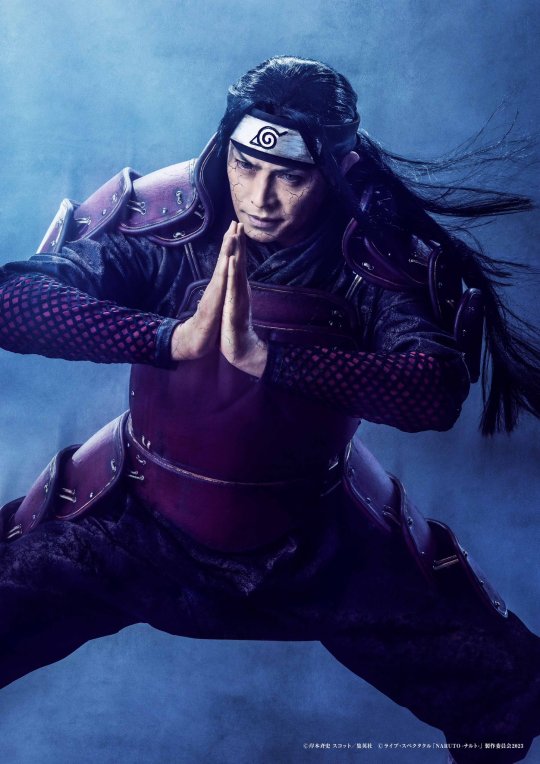

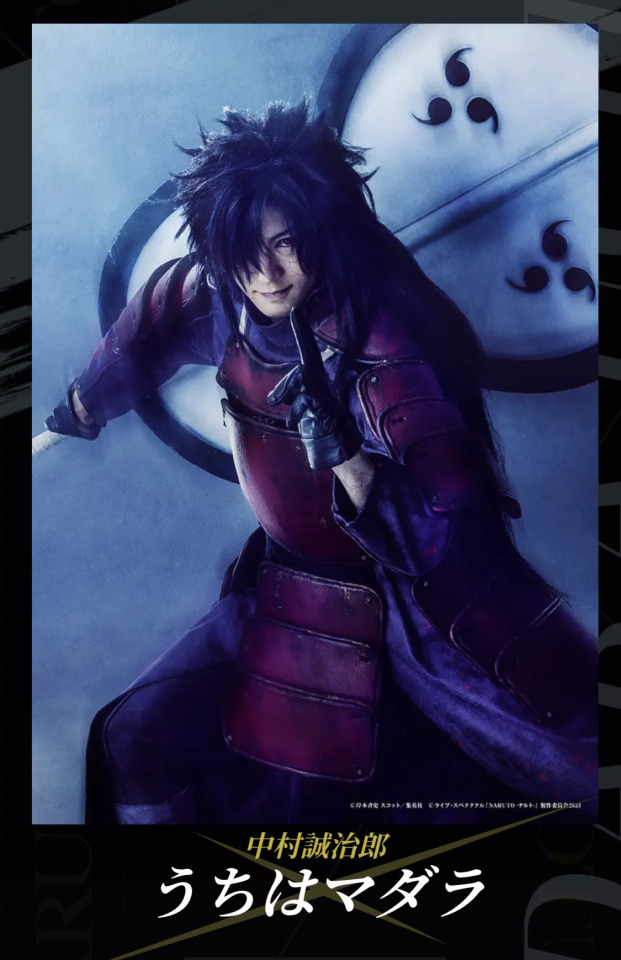
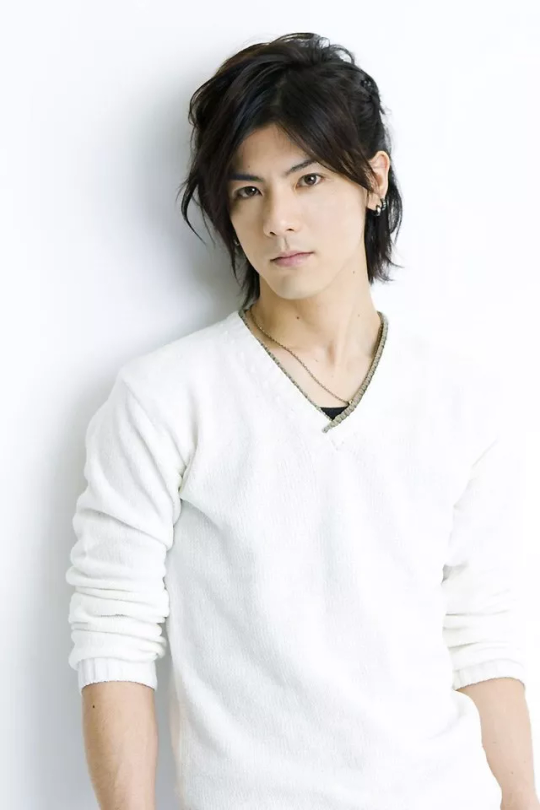
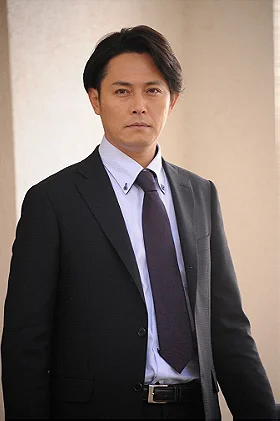

#Naruto Live Spectacle#The Path of Shinobi#Hashirama#Hashirama Senju#Tobirama#Tobirama Senju#Senju clan#Senju#Madara Uchiha#Madara#uchiha clan#uchiha#the Founders#Warring states era#Naruto#Naruto shippuden#Naruto live spectacle 2023
207 notes
·
View notes
Photo
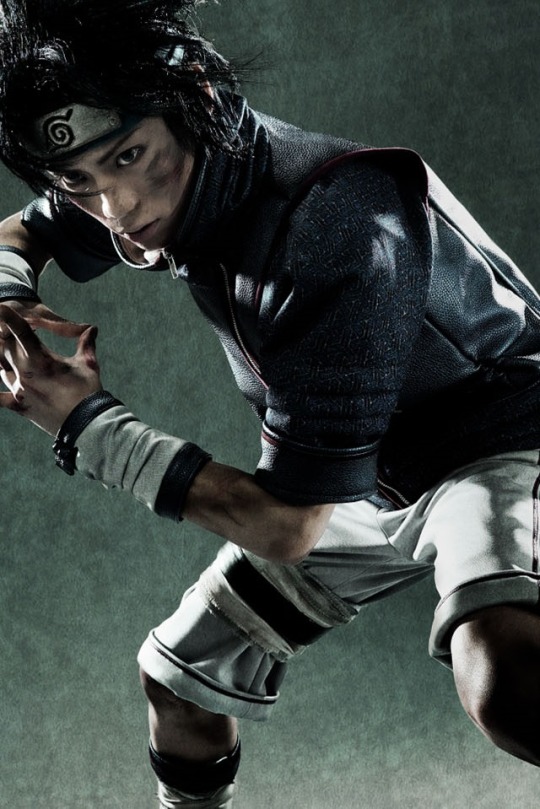




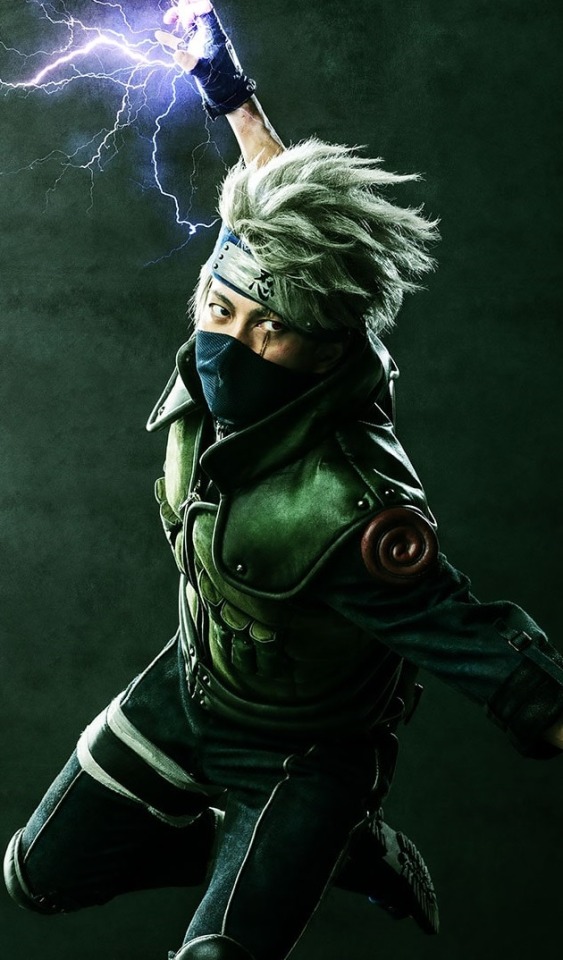


[NEWS UPDATE] Live Spectacle NARUTO: The Title, Full Cast and Other Information for the Final "Live Spectacle NARUTO" Stage have been Announced
TITLE
Live Spectacle NARUTO ~Shinobi no Ikiru Michi~
CAST
Nakao Masaki as Uzumaki Naruto
Sato Ryuji as Uchiha Sasuke
Ito Yui as Haruno Sakura
Kimisawa Yuki as Hatake Kakashi
Daigo Cecile as Tsunade
Sena as Hyuuga Hinata
Ikeoka Ryousuke as Nara Shikamaru
Kojima Sari as Yamanaka Ino
Kawai Ryuunosuke as Senju Tobirama
Tsukada Tomoki as Sarutobi Hiruzen
Naya Takeru as Gaara
Kitamura Keigo as A
Koyanagi Shin as Killer B
Maeda Ryuutarou as Hozuki Suigetsu
Nanaki Kanon as Karin
Ise Daiki as Uchiha Obito
Kitazono Ryo as Namikaze Minato (Fourth Hokage)
Hiro Yuumi as Orochimaru
Nakamura Seijiro as Uchiha Madara
Kyou Nobuo as Senju Hashirama
NOTE:
[1] Sato Ryuji (Uchiha Sasuke), Ito Yui (Haruno Sakura) and Kimisawa Yuki (Hatake Kakashi) are the starting members of "Live Spectacle NARUTO" who have been in every production since 2015.
For translations of Ryuji and Kimi-chan’s Tweets regarding the announcement of "Live Spectacle NARUTO ~Shinobi no Ikiru Michi~", please refer to this link: HERE
[2] Also making a notable return is Hiro Yuumi, who has played Orochimaru since 2015.
[3] On Team Taka, Nanaki Kanon will also be returning as Karin. Kanon-chan and Ryuji (Uchiha Sasuke) are the two members of Team Taka who have played their roles since the formation of Team Hebi in 2017.
DATES AND VENUES
Kanagawa
Dates: October 08, 2023 to October 11, 2023
Venue: Kanagawa Arts Theatre
Capacity: 1,200 people
Hyogo
Dates: October 18, 2023 to October 22, 2023
Venue: AiiA 2.5 Theater Kobe
Capacity: 775 people
Tokyo
Dates: October 28, 2023 to November 05, 2023
Venue: TOKYO DOME CITY HALL
Capacity: 2,500 people
OTHER PRODUCTIONS IN THE "LIVE SPECTACLE NARUTO"
To watch the other productions in the "Live Spectacle NARUTO", please refer to the links below.
Live Spectacle NARUTO (2015)
DVD: HERE
Live Spectacle NARUTO (2016)
Blu-ray: HERE
DVD: HERE
Live Spectacle NARUTO ~Akatsuki no Shirabe~ (2017)
Blu-ray: HERE
DVD: HERE
Live Spectacle NARUTO ~Akatsuki no Shirabe~ (2019)
Blu-ray: HERE
DVD: HERE
Live Spectacle NARUTO ~Uzumaki Naruto Monogatari~ (2021)
Blu-ray: HERE
DVD: HERE
Live Spectacle NARUTO ~Ninkai Taisen, Kaisen~ (2022)
Animate Limited Set (Blu-ray): HERE
Animate Limited Set (DVD): HERE
Limited Edition (Blu-ray): HERE
Limited Edition (DVD): HERE
GOODS FOR THE "LIVE SPECTACLE NARUTO"
To purchase the goods for the "Live Spectacle NARUTO", please refer to this link: HERE
NOTE:
[1] To purchase the individual goods for Uchiha Sasuke (Sato Ryuji), click on the dropdown menu above the "カートに入れる” (Add to Cart) and “スピード購入” (Speed Buy) buttons.
[2] Then, select the option that says “うちはサスケ:佐藤流司”.
For more information about the proxy services available for Japan, please refer to this link: HERE
Source: ( x )
#Live Spectacle NARUTO#Uzumaki Naruto#Uchiha Sasuke#Haruno Sakura#Hatake Kakashi#Orochimaru#Karin#Sato Ryuji#Nakao Masaki#Ito Yui#Kimisawa Yuki#Hiro Yuumi#Nanaki Kanon
187 notes
·
View notes
Text
Red Character Bracket
Minor Bracket

Hello, and welcome to the Red Character Bracket: Minor Bracket. This is how it’s gonna work- 64 contestants. Double elimination. Only one will make it out victorious. Now, for our contestants:
Apple White (Ever After High)
Hua Cheng (Heaven Official’s Blessing)
707/Saeyoung Choi (Mystic Messenger)
Matsuno Osomatsu (Osomatsu-san)
Riddle Rosehearts (Twisted Wonderland)
Opera (Welcome to Demon School! Iruma-kun)
Ikuyo Kita (Bocchi the Rock!)
Cromdo Face (Bugsnax)
Courtney (Dead End: Paranormal Park)
Char Aznable (Mobile Suit Gundam)
Alucard (Hellsing)
Anna Akagi (Kiratto Pri☆Chan)
Taiga Kagami (Kuroko's Basketball)
Tokiwa Anzai (Mewkledreamy)
Fuuta Kajiyama (MILGRAM)
Strawberry Shortcake (Strawberry Shortcake)
Ringo Akai/Mew Ringo (Tokyo Mew Mew)
Reimu Hakurei (Touhou Project)
Jibanyan (Yo-Kai Watch)
Shotaro Kaneda (Akira)
Jake Long (American Dragon: Jake Long)
Akito Takagi (BAKUMAN。)
Ruby (Battle for Dream Island)
Red Blood Cell/AE3803 (Cells at Work!)
Blast (Club Penguin)
Rosemaster (Cucumber Quest)
Honey Kisaragi/Cutie Honey (Cutie Honey)
Lilith (Darkstalkers)
Lina (DotA)
Red (Everhood)
Jack of Blades (Fable)
Wilt (Foster's Home for Imaginary Friends)
Major Motoko Kusanagi (Ghost in the Shell)
Nobuo Akagi/AkibaRed (Hikonin Sentai Akibaranger)
Ib (Ib)
Padparadscha (Land of the Lustrous)
Sally Yumeno (Sally the Witch)
ProtoMan.EXE/Blues.EXE (Mega Man Battle Network)
Dianite (Mianite)
Flain (Mixels)
The Spanish Inquisition (Monty Python's Flying Circus)
Orko (He-Man and the Masters of the Universe)
Camille Severin (Muted)
Tom Servo (Mystery Science Theater 3000)
Pop Harukaze (Ojamajo Doremi)
Scarlett (Papa Louie)
Pucca (Pucca)
Ranma Saotome (Ranma 1/2)
Benson Dunwoody (Regular Show)
Mira Hanayashiki (Sekko Boys)
Corporal Giroro (Sgt. Frog)
Kate (Shadows House)
Crow (SHOW BY ROCK!!)
Stereo Monovici (Space Goofs)
King Kazma (Summer Wars)
Lloyd Irving (Tales of Symphonia)
James the Red Engine (Thomas & Friends)
Captain Red Rackham (The Adventures of Tintin)
Clover Ewing (Totally Spies!)
Gold Ship (Uma Musume: Pretty Derby)
Rika Kawai (Wonder Egg Priority)
Pyra (Xenoblade Chronicles)
Yona (Yona of the Dawn)
Yugiri (Zombie Land Saga)
Polls will be posted every day at 12am EST, starting on April 2, 2023. The Major Bracket will be revealed at a later date. Good luck to all of our contestants ❤️
82 notes
·
View notes
Photo
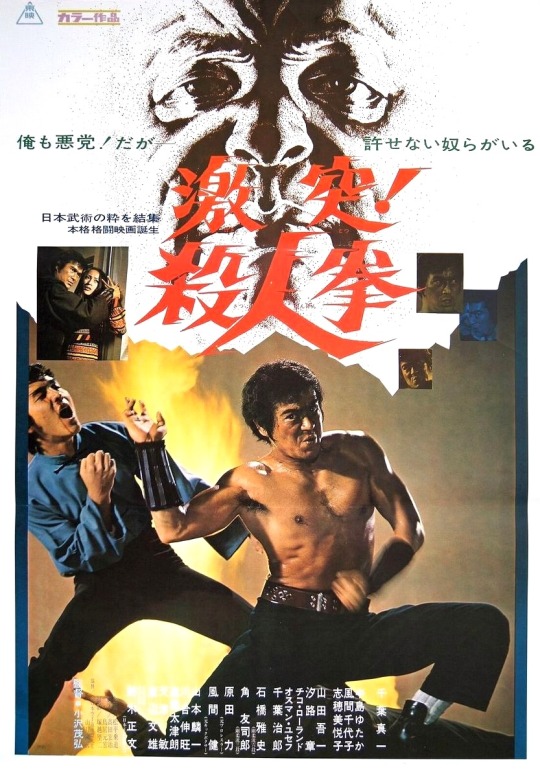



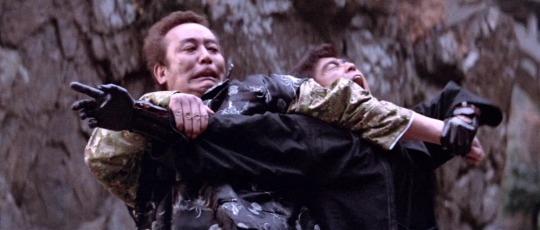




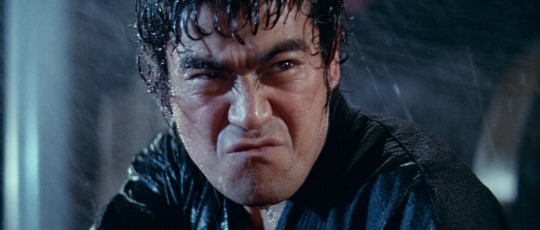
The Street Fighter / Gekitotsu! Satsujin ken (1974, Shigehiro Ozawa)
激突! 殺人拳 (小沢茂弘)
11/5/21
#The Street Fighter#Sonny Chiba#Yutaka Nakajima#Goichi Yamada#Etsuko Shihomi#Chico Lourant#Chiyoko Kazama#Nobuo Kawai#Akira Shioji#Shigehiro Ozawa#70s#Japanese#martial arts#action#crime#grindhouse#exploitation#oil#revenge#karate#prison break#gangster#yakuza#hitmen
19 notes
·
View notes
Text
Tag 20 followers you’d like to get to know better
Awww gosh @littlelady-blackwell I’m so sorry this is so long over due. I haven’t had the chance to do much and that includes coming on here... thanks for tagging me, happy to do this!
Nicknames: Ash, smash, lovely lady, the cat lady, the shark, knuckles
Gender: Female
Star sign: Sagittarius ♐️
Height: 5’8”
Hogwarts house: GRYFFINDOR!
Favourite colour: Anything that connects to blue really... but I’d have to say violet or indigo.
Time: 10:30pm
Lucky number: 12, 128, 19,
Average number of hours sleep: Ahahaha... well on a good day 8-9... bad days is like 3. So average is like 6... I guess.
That last thing I googled: How to fix mistakes while knitting. I’m teaching myself how to knit...and so far not that far off from crocheting.
Favourite fictional character: Depends on the series I’m reading because I like characters that have depth and who have had hard pasts...Saeran choi by far is one of the top ones... I’m also playing Ikemen revolution and I really am fond Edgar so far and Luka. Don’t get me started on SLBP... actually I should stop or I’ll make a list.
Number of blankets: 1
Favourite bands / artists: Red, pink, Set it off, breaking Benjamin, panic at the disco, fear and loathing in los Vegas, t.m.revolution, ashes remain, plumb, chase holfelder, linkin park, evanescence, skillet, within temptation, blowsight, starset, kalfina, and anything by Nobuo Uematsu.
Dream trip: Japan
Dream job: Mangaka or an archeologist
What I’m wearing right now: My pj’s
When I made this blog: So long ago now... **pictures Titanic movie: Its been 84 years~**
How many blogs I follow: 395
Posts: 9,254 (holy crap!)
What I post about: I like sharing what other people post, art, funny stuff, and stuff that makes you think.
When my blog reached its peak: I actually don’t really follow that stuff... to be honest yeah it’s nice when people like and reblog your stuff cause then others can see it too and enjoy it... but I never post with the intention of views per day.
Do I get asks every day: No, but it’s a nice surprise when I do.
Why I chose my username: Well originally I thought that the slight shift of kawaii (cute in Japanese) and kawai (scary) was interesting so I just added ash at the end to mean I could be cute but also scary... which is me to a tea. I don’t get mad often... but I’ve been told I’m quite scary when I’m angry. My other username belovedchaos comes from a character from Xenosaga I love, chaos. I just added beloved to the front cause I love him.
Thanks for reading!!
5 notes
·
View notes
Text
Tagged by @achroniclerofsilence, ten random songs on shuffle. I haven't done one of these in a while and thought it would be fun :> I also haven't been in my iTunes in a while because Spotify is a thing now, but it was nice to revisit my vast music library.
Now at Last - Feist
Hypnotize - System of a Down
Penthouse (Deus Ex: Human Revolution OST) - Michael McCann
After the Storm - Mumford & Sons
Sprouting (FFX OST) - Nobuo Uematsu
One - Metallica
Where the River Goes - Stone Temple Pilots
Finishing Jubilee Street - Nick Cave & the Bad Seeds
All About Us - t.A.T.u
Ghosthack (Ghost in the Shell OST) - Kenji Kawai
I'm not gonna tag anyone, but feel free to give it a go!
1 note
·
View note
Photo

sacred sword , a playlist for sacred sword janna.
i. gensou rin by akiko shikata. / ii. suteki da ne (orchestral) by rikki & nobuo uematsu. / iii. oogway ascends by john powell. / iv. moon by dai. / v. main title by joel mcneely. / vi. cherry blossoms by jia peng fang. / vii. koigokoro. / viii. lilium by the grissini project. / ix. the sending by nobuo uematsu. / x. carnation by himmel. / xi. vector to the heavens by yoko shimomura. / xii. main theme, tsumi by kawai kenji. / xiii. silent moon by jia peng fang.
listen.
#league of legends#janna#lol janna#league of legends janna#league of legends playlist#8tracks#more garbo#listen i've been on a janna hype jhfdksnkgd
11 notes
·
View notes
Text
An Autumn Afternoon (秋刀魚の味 Sanma no aji) - 1961
The last feature film of Ozu is arguably one of the most impressive works of him. The main theme of relationships between widowed father and his daughter is raised once again as in Late Spring, yet the other motifs are present here in abundance making An Autumn Afternoon almost as complex as Tokyo Story.

We are back to Tokyo where all the scenes of family life are shot in a very minimalistic way. These are the same bars where characters drink or dine (Luna bar once again!), the same office space, the same houses. Tatami-shots are quintessential for the visual part once again, just like in Higanbana. The camera doesn't move too much, being focused on the characters while they talk looking straight on us. The protagonists and their stories and struggles are also familiar for those who are into Ozu’s films, yet again and again, we see something additional, deep and complicated.
Throughout his career, Yasujiro Ozu has been always trying to capture the changes in Japanese society. Sometimes, these things are shown in very serious tones such as changing social conduct in Japan based on Late Spring themes. In the other case, he takes it with humour and irony as in comedy Good Morning, which shows a TV that children dream about as the symbolic representation of the West emerging in the Japanese culture and indicating intense changes. In An Autumn Afternoon, Ozu’s protagonist Hirayama (played by Chishu Ryu) is a former battleship’s commander during The II World Was, now a simple working widowed man with three children. Hirayama looks around himself in Tokyo during the strolls, and we witness how massive the changes of the 1960-s are. The world is way too different, and Japan has overcome the consequences of war. The country’s economic system was in a poor condition, while the whole districts of biggest cities were in ruins. In 1962, Japanese capital is shown on the screen as the city with immense development. It is very colourful, modern and staffed with billboards. Hirayama meets a former comrade-in-arms in the bar, and they hardly recognize each other. As the war is behind, they turned into simple men who live for the future of their families. They talk about war and the implication of Japan's surrender, and we can see nothing but the bitterness of the war they were forced to go to. They don’t come up with any fanatical statements about the loss and even say it could be even beneficial that Japan lost, for some reasons. It is implied, Hiroyama has lost his wife during the war. Showing these simple men talking about the past in this light while Japan is changing so fast is a great notice and motif of Ozu’s last work.

As the country and culture change, family values remain the same. Japan is always shown in the films of Ozu as the society based on strong family bonds. As it has been already mentioned, the main motif of the film follows Late Spring – a widower raised the daughter, and she is now 24 years old. The time for her marriage is coming, but father and daughter have developed strong dependence on each other, they are attached to each other too much to imagine they have to split the ways. Hiroyama is a loving and caring father, and his daughter Michiko (Shima Iwashita) is everything to him: a friend, a wife, an object for admiration, a reason for living. The wise friends of Hiroyama tell him he should start thinking of her marriage before it’s too late, but he dismisses these talks saying she is too young.
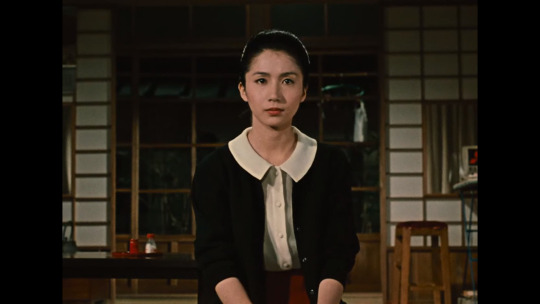
His mind changes as he encounters the former school teacher on a meeting of classmates. The teacher is already old, and his daughter never married because she decided to look after him. He states he is so lonely, despite the fact the daughter said with him. He is deeply saddened by the fact she has lived the entire life with him, and we see them in some sort of sad union where the father’s life is filled with grief because of daughter’s fate. The teacher drinks too much, and later we see him at the house where the daughter is present. She breaks into tears sitting next to him when he is drunk, and it is showing how lonely both of them are.
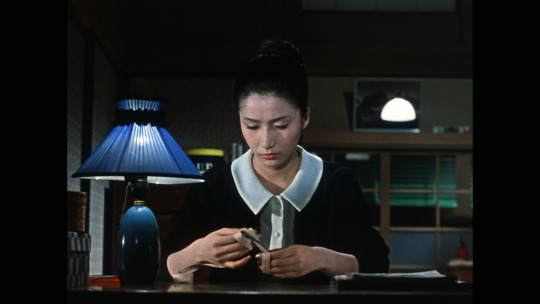
These events have impressed Hiroyama patriarch greatly, so he is in a rush to find a decent man for Michiko. The situation is getting more complicated as he learns that his daughter is in love with a young man while that guy had already made up his mind to marry another woman. With the help of school friends, they find the way through. The film ends just like Late Spring: Michiko leaves her house. Her father is both happy and devastated by the heart-breaking loss. We see the empty rooms of his house, the staircase and old Hiroyama in rumination sitting alone in the kitchen. This is the most touching moment of An Autumn Afternoon, along with the scene when Michiko learns that man she loved is already engaged, and her father wants her to marry another man.

As another layer of story, An Autumn Afternoon shows the oldest son of Hiroyama Koichi (Keiji Sada) living with his wife Akiko (one more fantastic role of Mariko Okada in Ozu’s films who recently appeared in Akibiyori as the real sparking star of the movie). A lot of curious and important shots from their joint life are shown by Ozu. This part of the plot is also interesting to follow as it accompanies the main motifs very well. However, patriarch Hiroyama seems to be more attached to his daughter, rather than to his two sons. This thing is also very distinctive for Ozu’s films: the deep and beautiful relations between are father and daughter are marvelous in the way he shows it.

And there is much more than that. Another sub-plot discloses the friendship between old school friends and show their concerns and a different attitude. One of them named Horie (Ryuji Kita) after becoming widower has just married a woman who is three years older than his daughter. Seeing him in love with such a young girl, his friends might be a little jealous at some point, but end up seeing he is also quite lonely. Hiroyama and his other friend Kawai (Nobuo Nakamura) are more concerned about their own kids and their happiness, while Horie is shown as an egoistic kid himself. Ozu pays a lot of attention to their talks and meetings, as well as to the time they spend with their old teacher nicknamed "The Gourd". It is essential for An Autumn Afternoon, as Ozu attempts many different sides of the everyday life of simple Japanese families.
It is worth mentioning that Shima Iwashita’s acting performance is stellar. Appearing as the bride in typical for Ozu ellipsis, she shines with her modest beauty and elegance. She delivers a great performance being able to show her deep love to her father, a strong intention to stay with him and eventual submission to both father and the life flow. She doesn’t break the harmony of the traditional Japanese family values. She is similar to Noriko from Late Spring in this regard, though the character of Michiko can’t be compared to Noriko. In Late Spring, the heroine played by Setsuko Hara (whose last Ozu's role was The End of Summer) became the most elaborate female character of Ozu’s films who had developed the set of unique personal qualities and demonstrated an endless depth of peculiarities of father-daughter relationships.

Unlike Late Spring, An Autumn Afternoon is not so much concentrated on one female protagonist. It is a very comprehensive and complex feature film of Ozu which remained a vivacious last element of his vision of the family life and dramas he has been showing on the screen for more than three decades.
#an autumn afternoon#秋刀魚の味#ozu#yasujiro ozu#小津 安二郎#chishu ryu#shima iwashita#篠田 志麻#mariko okada#岡田 茉莉子
1 note
·
View note
Text
Thanks, have little time today so I’ll answer. Was tagged by @queen-shera,
Nicknames: Joy, very rarely used and I am not fond of it
Gender: Octopus
Star sign: Virgo
Height: 158cm [not standing on my longest tentacle though]
Time right now: 8:22PM
Last thing i googled: “Do dogs love it when you talk to them?”
Favourite bands: Eraserheads, One OK Rock
Favourite solo artists: I have no favorite performer, but I am a big fan of Nobuo Uematsu, Hans Zimmer, Daisuke Ishiwatari, Yoko Kanno, Yuki Kajiura - all composers.
Song stuck in my head: "Making of a Cyborg” by Kenji Kawai
Last movie i watched: Ghost in the Shell - original
Last tv show i watched: “Ang Probinsyano.” Unwillingly.
When did you create your blog: Around five years ago or six
What do you post: ramblings, reviews, FFVII, Cloti, Dragon Age, DC. Inactive mostly.
When did your blog reach its peak: Maybe three years ago, before I got internet anxiety.
Do you have any other blogs: Yes. I have a cloti and zerith blog.
Do you get asks regularly: When I tell people to ask me they ask a lot. They have to follow rules else I turn off my ask box.
Why did you choose your url: because I am terrible at naming things, but it sounds like someone I know
Following: 2OO or more [my numpad is broken]
Posts: 17k and more
Hogwarts house: Most fitted to Ravenclaw but can be a Hufflepuff you don’t cross with, it will end badly
Pokemon team: Not sure, not a big fan
Favourite colours: White, sea green, the contrast of black night sky with stars
Average hours of sleep: six
Lucky numbers: dunno
Favourite characters: I avoid too much attachment nowadays, but because of Dragon Age I am currently fond of Alistair Theirin. I deeply love and relate Leliana since we have a lot in common, especially her change in Origins to Inquisition. It is happening to me.
What are you wearing right now: Black tanktop and shorts
Dream job: Theater performer, filmaker, president of the Philippines - none attainable maybe
Dream trip: pilgrimage to Jerusalem
Anyone can answer then tag me as their tagger
3 notes
·
View notes
Text
Final Fantasy IX PS4 Launch Trailer Streamed
Final Fantasy IX PS4 Launch Trailer Streamed
IGN has updated their official Youtube channel with the launch trailer for Final Fantasy IX for the Playstation 4. For those who are unaware Final Fantasy IX was released on the original Playstation on November 13, 2000 in North America.
The Playstation 4 version of the game will support trophies and will feature game boosters…
View On WordPress
#Darkon633#Final Fantasy#Final Fantasy 9#Final Fantasy IX#Gaming#Gaming News#Hero Club#Hideo Minaba#Hironobu Sakaguchi#Hiroshi Kawai#Hiroyuki Ito#Nobuo Uematsu#Playsation 4#Playstation#PS4#Shinji Hashimoto#Sony#Square#Square Electronic Arts#Square Enix#ファイナルファンタジーIX
0 notes
Link
Japan’s prime minister, Shinzo Abe, decided to resign Friday ostensibly because of his health, but also because he fears the unpleasant and unhealthy conditions of a Japanese prison. At a press conference, he cited his painful stomach condition ulcerative colitis as the reason for stepping down, but he leaves at a time when his ratings are plummeting and he is under at least one criminal investigation, with the public clamoring for the reopening of other cases.Abe is not resigning; he is escaping. He is under investigation by the Japanese prosecutors for violations of election laws, similar to those his former handpicked justice minister is now being tried for in the lower courts of Tokyo. Testimony in that case may implicate Abe in the political scandal as well. Abe’s efforts to shield himself from investigation by Japan’s authorities have fallen apart. A high-ranking member of the Liberal Democratic Party (LDP), of which Abe also serves as president, told The Daily Beast on conditions of anonymity, “If Abe had been able to stack the prosecutor’s office with his choice—he’d still be clinging to power. His choice for the next head of the National Police Agency, Itaru Nakamura, was sidelined this month and Abe fears being arrested by either the prosecutors or the police. Resignation now allows him to escape a lot of scrutiny.” Nakamura was the high-ranking police chief that ended the rape investigation of Abe’s unofficial biographer.A source in the Ministry of Justice told The Daily Beast, “It’s a done deal. Abe resigns taking ‘social punishment’ and several criminal investigations into his conduct are going to be closed.” Former special prosecutor Nobuo Gohara says, “It doesn’t seem like a coincidence that he resigns the same week a criminal trial has started in which Abe’s involvement will become a central issue.” The Tweet of DefeatThis year, Abe’s approval ratings sank as low as 27 percent in opinion polls. You’ll see many things cited in the Japanese press in the coming days about what caused Abe’s grip on power and popular support to fail. There have certainly been many gaffes this year. He ignored the growing threat of the novel coronavirus due to his obsessive desire to hold the Olympic Games, which meant that Tokyo had to appear safe. His plan to distribute two face masks to every household, when masks were in short supply, was an expensive disaster. The masks were too small, dirty, and they were slow to be delivered. They were ridiculed as “Abe No Mask,” which sounds much like “Abenomics” when said in Japanese. Abenomics was the PM’s much-touted fiscal policy that involved the imaginary “arrows” of monetary easing and financial reforms, but the overhaul never came and the policy was a total failure. Abe claimed that Japan’s “if you don’t test, you don’t know” coronavirus policy had worked fantastically, until it failed and the infection rates began shooting up again. This was accelerated by his obstinate push for the implementation of a weirdly named promotional campaign,“Go to Travel,” which ended up translating for many people to “Go to Quarantine” as the pandemic resurged. What has derailed his popularity isn’t his poor handling of the coronavirus pandemic, but an ill-timed attempt to consolidate his power in the midst of it. SayonaraAbe (in Japanese) was trending on Twitter months ago. The end of the Abe era began with a single tweet that started his downward spiral in May. There is some irony in a prime minister who invested so much energy controlling Japan’s mainstream media being taken down by social media. On the evening of May 9, there was a tweet by a 35-year-old female office worker that sparked an inferno of public dissent. The resulting tweetstorm was fueled by Japan’s usually apolitical celebrities and former prosecutors. Even LDP members expressed dissent.The content of the tweet seems rather prosaic. “I protest the proposed changes in the Public Prosecutor Office Laws.” There were 8 million tweets with the hashtag “I protest the proposed revision of the Public Prosecutors Office Law,” by May 14. Here’s the backstory. Abe has slowly exerted his control over government agencies, public broadcaster NHK, and even the media. In 2014, he created a Cabinet Personnel Bureau that gave the cabinet control over the appointment of hundreds of top-level bureaucrats. Ambitious government workers paid attention, and have since worked hard not to offend him and gain favor. He has incentivized them to cover up scandals without being directly asked. He has wined and dined the press to curry favor, and bullied them relentlessly when displeased. Japan’s press-freedom ranking was No. 22 when he took office; it now ranks 66th. At the start of the coronavirus pandemic, Abe and the ruling LDP lobbied for changes in the constitution that would give the cabinet absolute authority in an emergency. The attempt failed but even conservative magazine PRESIDENT called it in an opportunistic and despicable grab for power. When he tried to put the public prosecutor’s office under his thumb this summer, he was going too far. Fatally Wounded The move against the prosecutors began on Jan. 31, when the Abe cabinet decided to delay the retirement of Japan’s second most powerful prosecutor, Hiromu Kurokawa. Kurokawa was reportedly very close to Abe and cabinet secretary Yoshihide Suga. The press referred to him as “the guardian deity of the Abe cabinet.” The majority of prosecutors are required by law to retire at 63; Kurokawa was allowed to stay on. Abe claimed this was not a problem because his cabinet had “reinterpreted the law” to make it possible. The opposition, legal scholars, and the public vehemently disagreed.The administration stood its ground but later proposed an amendment to the Public Prosecutor Laws. This was seen as a retroactive attempt to justify keeping Kurokawa in office, and clearing the way for replacing the top prosecutor in Japan. Former Prosecutor-General Kunihiro Matsuo and other ex-prosecutors wrote a protest letter to the Ministry of Justice stating explicitly that they believed the revisions were an attempt by the Abe administration to have prosecutors act in accordance with their will. The letter quoted John Locke: “Wherever law ends, tyranny begins.” Abe defended the bill in parliament, “There will be no instances of [prosecutorial] personnel affairs being determined arbitrarily,” he said. Only 16 percent of the public believed him.Typically, Abe would ramrod the bill into law anyway, as he has done with other unpopular legislation. By May 18, his approval ratings had plummeted to 34 percent. The same day, the LDP agreed to temporarily table the legislation. That evening, more than 600 lawyers submitted legal briefs to the Tokyo prosecutors office accusing Abe of misusing public funds to hold cherry blossom viewing parties for his constituents, a scandal that became known as “Cherryblossom-gate.” Bad luck followed Abe’s bad decisions. The weekly magazine Bunshun reported that Kurokawa had routinely played mahjong with reporters, gambling on the games in clear contravention of Japanese law. Kurokawa was given an admonishment and allowed to resign. After nearly a decade in power, Abe has become haughty, declaring in parliament last year “I am the nation.” He has been winning for a long time, but no one’s luck lasts forever. The legislative attempt to subvert the prosecutors may have been, to paraphrase the title of an epic war film, a bill too far. It was later abandoned entirely. Already on Trial? The current investigation of “Cherryblossom-gate” is not the only problem facing Abe. He is being dragged into the high-profile trial of a close friend and supporter. This June, Katsuyuki Kawai, 57, a House of Representative member and his wife, Anri Kawai, 46, a member of the House of Councilors, were indicted on suspicion of handing out millions of yen in cash to politicians and supporters in Hiroshima Prefecture. This was allegedly in return for their efforts to secure votes in the Upper House elections held in July 2019. Abe appointed Katsuyuki minister of justice in September 2019; Katsuyuki resigned on Oct. 31. Their trial began this week.The LDP headquarters provided nearly $1.5 million (150 million yen) or more in campaign funds to Anri Kawai, and some of that money may have been used in bribing local politicians to help round up votes. If Abe himself, as president of the LDP, approved the whopping funding for Anri, he will move into the spotlight.Former Special Prosecutor Nobuo Gohara told The Daily Beast, “It seems clear from the opening statements by the prosecutors in the case of Kawai, that they will show Prime Minister Abe’s involvement in this case. For a former minister of justice, hand-picked by Abe to be involved in bribing other politicians—outrageous. Even if Abe can avoid criminal responsibility, he has a moral responsibility in the matter.”Gohara sees Abe’s inability to stomach his position as part of the stress of not knowing when or if he will be implicated in the current trial. There is a third fire burning under Abe’s feet, one known as the Moritomo-gakuen case. In 2017, it became clear that government land valued at nearly $8 million had been sold to a right-wing school operator for $1 million, reportedly at the urging of the prime minister and his wife, Akie. The school was going to be named Abe Elementary. When the scandal came to light, bureaucrats in the ministry of finance altered and destroyed documents to cover up Abe’s involvement. One government official, Toshio Akagi, refused to play along and killed himself in protest in March 2018. He left behind incriminating documents that his widow revealed this year. Over 70 percent of the Japanese public now wants a reopening of the investigation into the Morikake case. He didn’t learnAbe virtually vanished for a month this summer, avoiding all press conferences and parliamentary discussions. He can now avoid discussing the scandals surrounding him very easily. He has seemingly timed his publicized visits to the hospital this week in a way to make sure that questions about his involvement in corruption cases were not asked. By visiting Keio Hospital on Aug. 24, the day before the Kawai trial, attention was shifted from his role in the case, to whether or not he was going to be able to continue as prime minister. Abe’s great escape is not as dramatic as the flight of former Nissan Chairman Carlos Ghosn, but it’s a valiant effort. Abe was Japan’s longest reigning prime minister in its constitutional history, but never has so little been accomplished in such a long period of time. If he leaves any legacy at all, it is a number of bills passed into law that were so unpopular they now lie like landmines and may blow up Japan’s brittle democracy someday. Those laws include: a draconian conspiracy law that seems right out of the sci-fi film Minority Report; a repressive and Orwellian state secrets law that will muffle the press and whistleblowers; and the Peace Preservation Act, which allows ostensibly pacifist Japan to wage war.This was his second term in office after a disastrous stint from 2006 to 2007. He was able to resurface due to the support of the right-wing Shinto cult Nippon Kaigi, which will continue to yield great power in parliament long after Abe. They say those who don’t remember history are doomed to repeat it. Perhaps the root of Abe’s folly is that he is a well-known historical revisionist, the grandson of a war criminal, who has never been able to admit to the atrocities committed by Japan in World War II; many of his political appointees and allies admired Hitler. He’s been so busy trying to deny the past that it seems Abe can’t even learn from his own history. His life is a re-run.He leaves office much the same way he did when he stepped down in 2007: unable to handle the job while mired in scandals involving his cronies; unpopular, considered incompetent, and irrelevant. He will not be missed. Read more at The Daily Beast.Get our top stories in your inbox every day. Sign up now!Daily Beast Membership: Beast Inside goes deeper on the stories that matter to you. Learn more.
from Yahoo News - Latest News & Headlines https://news.yahoo.com/japan-longest-serving-pm-shinzo-122956969.html
0 notes
Text
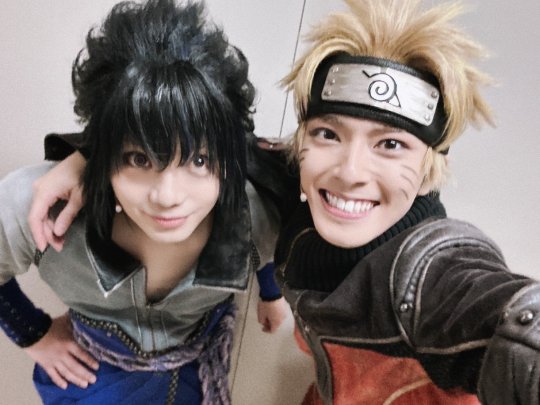


[NEWS] Live Spectacle NARUTO: The Content and Previews of Bonus Bromides for the "Live Spectacle NARUTO ~Shinobi no Ikiru Michi~" Blu-ray/DVD have been Released
Release Date: April 24, 2023
TYPES
Animate Limited Set (Blu-ray/DVD): 11,330 yen / 10,230 yen
Main BD/DVD
Special booklet *
Animate special bonus DVD
Limited Edition (Blu-ray/DVD): 10,780 yen / 9,680 yen
Main BD/DVD
Special booklet *
* The special booklet that is included with the Blu-ray/DVD is different from the performance pamphlet that can be found: HERE
BLU-RAY/DVD CONTENT
Main Disc (BD/DVD)
"Live Spectacle NARUTO ~Shinobi no Ikiru Michi~" grand finale performance
Bonus Disc (DVD)
Making and backstage footage
Opening + Valley of the End + singing scenes (Uzumaki Naruto version)
Opening + Valley of the End + singing scenes (Uchiha Sasuke version)
Animate Bonus Disc
"Live Spectacle NARUTO ~Shinobi no Ikiru Michi~" grand finale performance panoramic view
Cast camera footage
NOTE: The Animate bonus disc is only available with the Animate Limited Set.
ADDITIONAL IN-STORE BONUS AND SALES LINKS
Animate
Onstage Bromide Set:

Nakao Masaki as Uzumaki Naruto
Sato Ryuji as Uchiha Sasuke
Ito Yui as Haruno Sakura
Kimisawa Yuki as Hatake Kakashi
Daigo Cecile as Tsunade
Ise Daiki as Uchiha Obito
Kitazono Ryo as Namikaze Minato (Fourth Hokage)
Hiro Yuumi as Orochimaru
To pre-order/purchase the BD/DVD from Animate, please refer to the links below.
Animate Limited Set (Blu-ray): HERE
Animate Limited Set (DVD): HERE
Limited Edition (Blu-ray): HERE
Limited Edition (DVD): HERE
ANIPLEX+
Onstage Bromide Set:

Nakao Masaki as Uzumaki Naruto
Sato Ryuji as Uchiha Sasuke
Naya Takeru as Gaara
Kitamura Keigo as A
Koyanagi Shin as Killer B
Maeda Ryuutarou as Hozuki Suigetsu
Nanaki Kanon as Karin
Nakamura Seijiro as Uchiha Madara
To pre-order/purchase the BD/DVD from ANIPLEX+, please refer to this link: HERE
Amazon
Onstage Bromide Set:
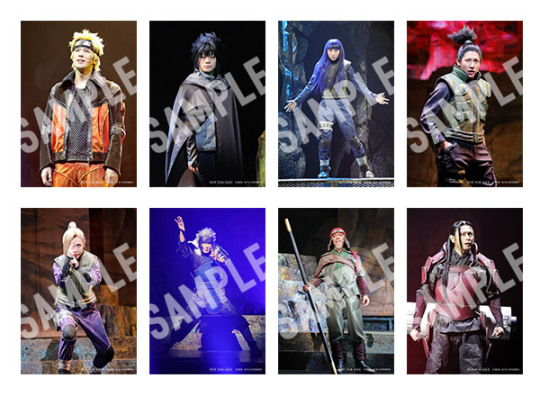
Nakao Masaki as Uzumaki Naruto
Sato Ryuji as Uchiha Sasuke
Sena as Hyuuga Hinata
Ikeoka Ryousuke as Nara Shikamaru
Kojima Sari as Yamanaka Ino
Kawai Ryuunosuke as Senju Tobirama
Tsukada Tomoki as Sarutobi Hiruzen
Kyou Nobuo as Senju Hashirama
To pre-order/purchase the BD/DVD from Amazon, please refer to the links below.
Limited Edition (Blu-ray): HERE
Limited Edition (DVD): HERE
* Ensure that the link leads to the BD/DVD which says "(オリジナル特典:「舞台写真ブロマイドセット」付)" as this is the version with the bonus onstage bromide set.
NOTE: For more information about the proxy services available in Japan, please refer to this link: HERE
Source(s): ( x , x , x , x )
12 notes
·
View notes
Text
What You Know About Landscape Japanese Painting And What You Don’t Know About Landscape Japanese Painting | landscape japanese painting
What You Know About Landscape Japanese Painting And What You Don’t Know About Landscape Japanese Painting | landscape japanese painting – landscape japanese painting
| Allowed to be able to my weblog, within this time I’ll explain to you regarding keyword. Now, this can be a 1st image:
Japanese Landscapes Paintings For Sale | Saatchi Art – landscape japanese painting | landscape japanese painting
What about picture preceding? is which incredible???. if you believe thus, I’l d demonstrate a few photograph yet again under:
So, if you desire to receive the great photos about (What You Know About Landscape Japanese Painting And What You Don’t Know About Landscape Japanese Painting | landscape japanese painting), simply click save link to store the pictures to your laptop. They’re available for save, if you’d prefer and wish to get it, just click save badge in the page, and it’ll be instantly saved in your desktop computer.} Finally if you need to have new and the recent picture related with (What You Know About Landscape Japanese Painting And What You Don’t Know About Landscape Japanese Painting | landscape japanese painting), please follow us on google plus or save this site, we try our best to present you daily up grade with fresh and new shots. Hope you love keeping right here. For some up-dates and latest news about (What You Know About Landscape Japanese Painting And What You Don’t Know About Landscape Japanese Painting | landscape japanese painting) shots, please kindly follow us on tweets, path, Instagram and google plus, or you mark this page on book mark area, We attempt to present you up grade regularly with all new and fresh graphics, enjoy your exploring, and find the right for you.
Thanks for visiting our website, articleabove (What You Know About Landscape Japanese Painting And What You Don’t Know About Landscape Japanese Painting | landscape japanese painting) published . At this time we’re excited to announce that we have found an incrediblyinteresting nicheto be discussed, that is (What You Know About Landscape Japanese Painting And What You Don’t Know About Landscape Japanese Painting | landscape japanese painting) Some people trying to find info about(What You Know About Landscape Japanese Painting And What You Don’t Know About Landscape Japanese Painting | landscape japanese painting) and of course one of these is you, is not it?
Koukei Kojima | landscapes | Pinterest | Japanese … – landscape japanese painting | landscape japanese painting
Japanese- Chinese landscape with Twombly in my mind Painting by … – landscape japanese painting | landscape japanese painting
NOBUO impressionist Japanese art landscape painting near … – landscape japanese painting | landscape japanese painting
a Japanese painting by KAWAI Gyokudo (30-30) | Oriental Art … – landscape japanese painting | landscape japanese painting
File:A landscape painting.jpg – Wikimedia Commons – landscape japanese painting | landscape japanese painting
Top 30 Trends In Japanese Painting Landscape To Watch | japanese … – landscape japanese painting | landscape japanese painting
Japanese Garden Landscape – Painting Art HD Wallpaper … – landscape japanese painting | landscape japanese painting
turner_burning_houses_parliament_1834 – landscape japanese painting | landscape japanese painting
vertical japanese landscape painting | newyorkutazas.info … – landscape japanese painting | landscape japanese painting
Japanese garden by Valadilenne | classroom ideas … – landscape japanese painting | landscape japanese painting
Landscape – Japanese Maple Tree | Helen Barnshaw | Foundmyself – landscape japanese painting | landscape japanese painting
Japanese Landscape Painting by Nadine Westerveld – landscape japanese painting | landscape japanese painting
japanese landscape painting 30 – Newest Home Lansdscaping Ideas – landscape japanese painting | landscape japanese painting
The Tsubo-en tsukiyama (artificial hills) – landscape japanese painting | landscape japanese painting
Japanese Painting | Penobscot Bay History Online – landscape japanese painting | landscape japanese painting
Honolulu Museum of Art » Continental Style: Chinese Influence in … – landscape japanese painting | landscape japanese painting
Japanese Ukiyoe-Woodblock Print-Glass-Tile Art Paintings … – landscape japanese painting | landscape japanese painting
Koukei Kojima [小島光径] ~ The Cherry Blossoms | Tutt'Art … – landscape japanese painting | landscape japanese painting
Morikami Japanese Gardens – landscape japanese painting | landscape japanese painting
Japanese Landscape by Kirill Danileiko – landscape japanese painting | landscape japanese painting
Landscape, Japanese oil painting reproduction by Toeki Unkoku … – landscape japanese painting | landscape japanese painting
168 best Japanese Art | Tattoo Ideas & Inspiration images … – landscape japanese painting | landscape japanese painting
10 best Japanese landscape painting images on Pinterest … – landscape japanese painting | landscape japanese painting
japanese landscape painting easy | Art Painting – landscape japanese painting | landscape japanese painting
The Three Bridges Antique Scroll Japanese Landscape Original | Etsy – landscape japanese painting | landscape japanese painting
25+ best ideas about Japanese Landscape on Pinterest … – landscape japanese painting | landscape japanese painting
File:Landscape painting in the Chinese style by Shûgetsu … – landscape japanese painting | landscape japanese painting
Japanese Landscape Paintings | Fine Art America – landscape japanese painting | landscape japanese painting
japan painting landscape canvas painting 30 panels art picture great … – landscape japanese painting | landscape japanese painting
from WordPress https://landscapeusa.club/what-you-know-about-landscape-japanese-painting-and-what-you-dont-know-about-landscape-japanese-painting-landscape-japanese-painting/
0 notes
Text
Hyperallergic: I Am an American: The Photographic Legacy of Japanese American Incarceration
Francis Stewart, Newell (Tule Lake), California, October 31, 1942. Original WRA caption: “Great originality in costumes was shown at the Harvest Festival Parade held at this relocation center” (© and courtesy UC Berkeley, Bancroft Library)
In the middle of Gambatte! — an exhibition of photographs of Japanese immigrants and Japanese Americans incarcerated in United States concentration camps during WWII, paired with portraits, taken over half a century later, by Paul Kitagaki Jr., of the same people, elders now, as well as their descendants and the descendants of those who died — there is one photo in particular that encapsulates the perverse psychosis that is settler colonialism in the United States. The photograph is of a parade. There is a crowd of people in costumes. Two of the people, identified as Kazuo and Kimiye Kawai, husband and wife, are in the foreground to the right. Kazuo is wearing a black suit and gloves. Kimiye is wearing a head-rag and a floral skirt. And both Kazuo and Kimiye are in blackface. “Harvest Day,” the caption says. “Halloween, Tule Lake, October 31, 1942.”
It is the only photograph I remember. It breathes on my shoulder. Every time I have returned to the exhibition, I have gone directly to it. The appearance of a young Nikkei couple in blackface in a U.S. concentration camp on land that had, until the late 1800s, been inhabited for thousands of years by the Modoc people, articulates the dynamic in which non-white people (native, alien, slave) are manipulated as the subjects and counter-subjects of a chronic performance. The photograph illuminates a nearly subliminal moment of antiblackness masquerading as minstrelsy, masquerading as carefree (careless) communal play-acting, masquerading as jubilation under duress (a.k.a. mass oppression). It is probably not the moment Kitagaki imagined as the keystone of his tribute to, and resuscitation of, incarceration history. But for me, it is: a photograph by which incarceration as a facet of the ongoing project of exclusion and erasure in the United States is laid (a little more) bare.
The photograph is by Francis Stewart. He, along with Dorothea Lange, was hired by the War Relocation Authority to document the incarceration. Their photographs form a majority of the past to which Kitagaki’s photographs pay tribute. Stewart’s portrait of Kazuo and Kimiye, for example, is paired with Kitagaki’s photograph of their son, Steve Nobuo Kawai, 71 years old in the portrait. In the accompanying narrative, Kawai describes his parents as being dressed in “typical vaudevillian blackface.”
Dorothea Lange, Oakland, California, May 6, 1942 (via Densho Digital Repository). Original WRA caption: Mr. and Mrs. Kitagaki with two of their children at the Wartime Civil Control Administration station a few minutes before departure by bus for Tanforan Assembly center. A local church member is handing Kimiko a pamphlet expressing the good wishes of the church toward the departing evacuees. Mr. Kitagaki, prior to evacuation, was in the cleaning and dyeing business.
“I was angry for most of my life,” Kawai says. He was born a prisoner in Tule Lake. His family’s number was 28201. Kawai, much older than his parents, in the portrait beside his, looks wistful. His parents, despite marching in a parade, look almost tentative, but their relationship to Stewart’s camera feels more incidental than Steve’s relationship to Kitagaki’s. They were living in the moment. History had bound them to it. And held them there, while eliminating, from the other side of the barbed wire, everything else. It is not that they died there, bound to the present, but that their newborn (American citizen) son formed, for them, a bridge into time, the future, that is, the realization of their trauma. Steve is not posing alone. He is posing with his parents. He is posing, that is, with and for the dead, everything the dead did not want to or could not express, and everything they died without knowing.
Gambatte could be translated several ways. Don’t give up, for one. The full title is Gambatte! Legacy of an Enduring Spirit: Triumphing over Adversity. A mouthful, and maybe a little anticipatory. The exclamation point is meant as amplification. But it also hints at an underlying lament. There is a discrepancy between the emotion of the exclamation point and the emotion on the faces of the descendants, some of whom look even more uncertain than their forebears. Because their portraits rely so heavily on the past, the present feels evacuated, without context. Even though the backgrounds were specifically chosen to extend the narrative of each individual, they form an ameliorated, almost placeless, America.
Which is perhaps an accurate echo. Kitagaki’s portraits are of people who embody the legacy of incarceration, which is unsettled, disquieted, even, as incarceration was a sweeping fabrication. The portraits embody who and/or what the past had dreamed, in the opacity beyond the barbed wire. But the future, in their embodiment, seems perishable. What have they, what have any of us, fulfilled, of those dreams?
Dorothea Lange, Oakland, California, March 1942. (via Library of Congress). Original WRA caption: A large sign reading “I am an American” placed in the window of a store, at 13th and Franklin streets, on December 8, the day after Pearl Harbor. The store was closed following orders to persons of Japanese descent to evacuate from certain West Coast areas. The owner, a University of California graduate, will be housed with hundreds of evacuees in War Relocation Authority centers for the duration of the war
Kitagaki’s intention was “to create images that complement and mirror the original photographs” to “reveal the strength and perseverance” of his subjects. I have always been frustrated by the word perseverance, as I have by its Japanese counterpart, gaman. Both are used within my own family, not only when talking about incarceration, but when talking about what it means to be Japanese. The words essentialize Japaneseness as an inherent, reflexive set of behaviors, especially in response to atrocity and trauma, and especially when invoked, in the United States, as a kind of euphemism for model minority. I do not want to defeat what I am saying by saying also, not always. But the underlying and unacknowledged power of these words is that they are accomplices to silence.
Kimiko Kitagaki Wong and Paul Kiyoshi Kitagaki (September 18, 2005), outside the building in Oakland to which the East Bay Nikkei were first sent after removal (© 2017 Paul Kitagaki Jr.)
Maybe there is some part of that conflict registering on some of the descendants’ faces. Kitagaki’s aunt Kimiko Wong (family number 20247), first photographed as a teenager by Lange, looks, in Kitagaki’s portrait, standing beside Kitagaki’s father, stricken. Her hands are in fists. She looks like she is weathering the camera’s flash while staring beyond into a vaguely accessible memory. Maybe that is reading into the image too much. But the photograph is what is available to me. And the faces, stricken with the past, are conscripted to be its bearers. Because: as the grandson of a Japanese immigrant who was incarcerated, I am staring beyond the camera too, as well as beyond the words and phrases, in English and Japanese, with which the history of one arm of racial injustice is fighting to be enshrined. Another translation of Gambatte is: Good luck.
There is something dispiriting about the realization of a future. One of the most iconic of Lange’s photos is of Wanto Grocery, owned by the Masuda family, in Oakland. Hanging above the storefront is an enormous sign, black text on white, that says: I AM AN AMERICAN. Torasaburo Masuda made the sign the day after Pearl Harbor. Kitagaki’s photo shows three of Masuda’s descendants standing in front of where the store used to be. It is now a Chase Bank.
The Tucson Desert Art Museum, in Tucson, Arizona, shares a parking lot with a Chase Bank. It is not just that Chase Bank is everywhere (CHASE BANK IS AN AMERICAN), but that it seems to be constantly enfolding history into its shadows.
The museum was once a mall; the exhibition occupies an old store. At first I thought, why is there an exhibition on Japanese American incarceration in a museum in an old mall (which is also part of a strip mall with a hair salon, cleaner, and cross-fit) patronized by old white people, along some random stretch of desert? But then I thought: no, why aren’t there more, along even more random stretches of desert? The old white people on whom I spied walked very slowly through the galleries, studying each photograph; they spoke, while staring at the faces, of Japanese Americans they knew. Old friends, classmates, some dead, resolved, in their minds, as emblems of a shameful chapter, which has, to them, closed, even as it continues to bleed through the pages.
Dorothea Lange, Turlock, California, May 2, 1942 (via Densho Digital Repository). Original WRA caption: This aged woman of Japanese ancestry, in foreground, has just arrived at this Assembly center
Arizona had (at least) seven incarceration sites. The ruins of the Tucson Federal Prison Camp are just a few miles up the road from the museum. Another was on the Gila River Indian Reservation, outside Phoenix. That is where Yasuke Shimada died. She was 57. Her family number was 06350. She died of a heart attack. Lange took her photograph on the half-mile walk between the train station and the temporary detention center in Turlock, California, where she was incarcerated before Gila River. Shimada’s is one of the more indelible portraits. Not only because she is standing beside (is she holding?) what appears to be a very large leaf with softly illuminated edges, although there is that. Her son Yoshi remembers, in the narrative accompanying his portrait, the time a military policeman touched him with the tip of his bayonet. “We were the first group into the unfinished camp and then we had to help dig trenches for the outhouse,” he remembers.
There seem to be, as expressed in the narratives, two sentiments, by which the living continue to memorialize: indignation and resignation. The sentiments seem, at first, antithetical, but they might actually be separate phases of the same unending eclipse. When it comes to the mass incarceration of Japanese and Japanese Americans, I am, despite the redress and reparations, and the various, unfolding forms of remembrance and memorialization, entirely unconvinced that there has been any resolution, or even such a possibility. There is, in the wake, the unspoken injunction of faces appearing again—to express stories, to form new meanings out of a history that has not passed (is not past). Closure is being betrayed by the imperative to resurrect, against time, precisely those stories, precisely those meanings, newer and more instructive, precisely those lives, which are not at rest, nor the generations that each represents. There can be no ruins where the people who once occupied them are still living.
Gambatte! Legacy of an Enduring Spirit: Triumphing over Adversity. Japanese American WWII Incarceration Reflections, Then and Now continues at the Tucson Desert Art Museum (7000 E Tanque Verde Road, Tucson, Arizona) through April 30.
The post I Am an American: The Photographic Legacy of Japanese American Incarceration appeared first on Hyperallergic.
from Hyperallergic http://ift.tt/2ntLdy2
via IFTTT
0 notes
Text
Favourite Japanese composers in no particular order
Hisaishi Joe
Uematsu Nobuo
Kajiura Yuki
Kanno Yoko
Sawano Hiroyuki
Iwasaki Taku
Hirano Yoshihisa
Endo Mikio
Kawai Kenji
Nakagawa Kotaro
Taniuchi Hideki
Otani Kow
Sahashi Toshihiko
Matsumoto Akihiko
0 notes